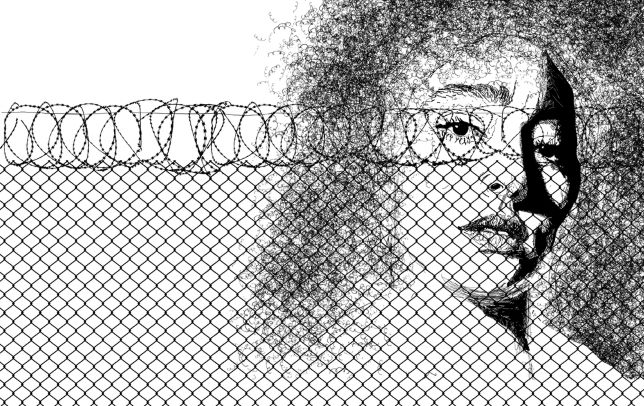Consensus Theories of Crime have been used to explain the sex trade and prostitution as an issue of morality, often viewing society members that participate in these activities as criminals who are notable to conform to societal expectations. Consensus Theories of Crime are based on several presumptions: our morality and the rules that control immoral behavior are natural, universal, and unchanging; through correction and punishment the individual rule-breaker can be changed into a law-abiding citizen and the criminal justice system can identify and deal with criminal behavior” (Brooks & Schissel, 2015, p. 37).
Consensus Theory and The Sociology of Crime examine criminal behavior that violates social norms and assigns the argument that our rules and societal ideals are correct simply because most people abide by them. “Sociological theories that are based on a consensus model make prior assumptions about social behavior. The basic assumptions are that the rules and norms by which we conduct ourselves are shared and, therefore, must be correct. Morality is a given” (Brooks & Schissel, 2015, p. 30). Explaining the complex nature of the sex trade and prostitution through a narrow lens provides a very limited understanding of the various political, social and economic factors that contribute to the sex trade and prostitution. In the Critical Theories of Crime, the approach does not focus on individual flaws; rather, it questions societal structures and the role of those structures in breeding and sustaining criminals” (Brooks & Schissel, 2015, p. 84).
This is why the Critical Criminological Theories of Crime are helpful when researching this issue as they tend to examine the broader causes of behavior and highlight important issues such as the disproportional marginalization and criminalization of minorities in our society and the role that institutions play in it. “Advocates of Critical Criminology have based their approach on an intrusive critique not just on mainstream criminology, but also of the state institutions that surround the discipline – institutions such as law, media, schools and the criminal justice system” (Brooks & Schissel, 2015, p. 66).
The Economic Model and Orthodox Functionalism
The Economic Model and Orthodox Functionalism examine the sex trade and prostitution as a viable alternative to living under an oppressive state and prostitution is described as an economic opportunity for women. The idea is that women engage in the sex trade as a means of supporting themselves through prostitution because there are no other choices for them. “Women engage in prostitution because of a lack of other opportunities and/or because prostitution tends to be economically more beneficial than many economic options available” (Brooks & Schissel, 2015, p. 123).
When comparing the Economic Model to the Consensus Theory and The Sociology of Crime, noted is the drastic absence of discussion surrounding the power dynamics that exist between the state and the policing of the sex trade. As described above, many women turn to prostitution as a last resort to employment because of the oppressive living conditions of the state yet many theories place the blame solely on the women. In the Pathological Consensus Theory, for example, women themselves would be labeled as deviant or lower class citizens because of their work. The contrasting viewpoint of early pluralists focused more on the power gains for certain groups in society and how they would monopolize opportunities to advance, resulting in certain groups being left out in the cold. “Key features of a Pluralist Paradigm include the premise that social power originates from a municipality of sources and is decentralized and fragmented” (Brooks & Schissel, 2015, p. 41).

Biological and Physical Positivism
Biological and Psychological Positivism examines crime by introducing medical explanations and concepts of pathology to explain deviant behaviour that is especially offensive within society such as the murder of a child or serial sex offenses. Many individuals who are convicted of such serious crimes often have to undergo medical and psychological testing in order to be deemed a sound mind and progress through the legal system and some are even deemed not criminally responsible for their actions because of medical/mental classifications. The result in how criminals are treated due to this theory is putting them in the correct type of facility and receiving the correct type of treatment or rehabilitation. The main premise of the Biological and Psychological Positivism Theory is that individuals follow a deviant path because of an underlying medical disease or some form of mental deficit that is deeply lodged within the individual (Brooks & Schissel, 2015, p. 25). This concept follows a medical, scientific model and evidence-gathering is a major focus of effort. Because of this, we study the biology and/or psychology of the individual and link the differences. For example, scientists often study the brains, hormone levels and IQ of notorious offenders in an attempt to better understand the physical or mental anomalies that exist to help explain their crimes.
References: Brooks, C. & Schissel, B. (2015). Marginality and condemnation – a critical introduction to criminology (Third). Fernwood Publishing Co Ltd
Home
About
services
stories
shop
resources
contact
MENU
We like to think of Urban Runaway as a knowledge-sharing community where accessing on-demand support is as simple as making a heart-to-heart phone call. We’ve created a bunch of amazing programs and resources to inspire you.
GRAB THE urban
free
runaway toolkit
Inspiration to help you start your own heart project.